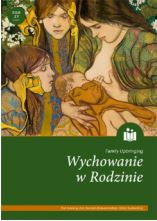Współczesna rodzina jako potencjalny czynnik w ryzykownych
zachowaniach wśród dzieci i młodzieży
Current family as a potential factor of risky
behaviour among children and youth
Author(s): Stanislava HoferkováSubject(s): History, Social Sciences, Education, Sociology, Social history
Published by: Zakład Historii Edukacji w Instytucie Pedagogiki Uniwersytetu Wrocławskiego
Keywords: family; risky behaviour; social deviance; children; juveniles; etiology
Summary/Abstract: The contribution presents the family as a potential factor of risky behaviour among children and juveniles in the Czech Republic. Youth conduct that violates social norms of the society can be labelled as deviant, risky, defective, etc. In recent years the conceptof risky phenomena (or risky behaviour) has been introduced, particularly in school education; it replaced the previously used concept of socially pathological phenomena. Risky behaviour refers to those behaviours that have a negative impact on health, the social or psychological performance of an individual, or threaten his social surroundings. Such phenomena include, for example: truancy, crime and delinquency, various forms of aggression (bullying towards classmates and teachers), vandalism,self-aggression (self-harm, eating disorders), and abuse of addictive substances or dangerous phenomena related to information technology (e.g. cyber-bullying or addictionon the computer). Internal and external factors partake in the inception of deviant behaviour (signs of risky behaviour); introduced as multifactor etiology of the concept of social deviance. External factors are mostly perceived as fundamental; these are, for example:school, peers, the media, but especially the family. The post characterizes the contemporary family in the 21st century, which is defined by more features that can beperceived as risky in the forming of deviant behaviour. These include e.g. the demographic situation (low total fertility rate, increasing amount of cohabitation, high divorcerate, “missing” fathers), a deteriorating socio-economic situation (social exclusion, poverty), shifts in values (consumerism), or media coverage of human life.
Journal: Wychowanie w Rodzinie
- Issue Year: XV/2017
- Issue No: 1
- Page Range: 187-198
- Page Count: 12
- Language: English, Polish

